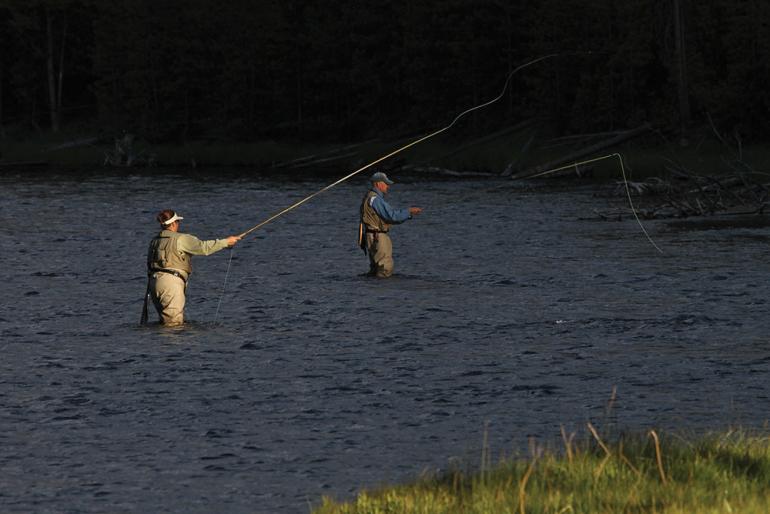End of the Line
The ins and outs of tapered leader.
Like most every other activity these days, gear abounds in fly angling and gearheads happily bedeck themselves in it. But when there’s a fish on the line, that’s the only thing that matters—the line, that is. Every other expenditure is ancillary to this quivering link between you and the trout on the other end, so pay special attention to that purchase. And while most scientific “advancements” in the realm of outdoor recreation are, without exception, so odious as to make one emetic, there is one novelty in the world of fly tackle that is genuinely miraculous: tapered leader.
Commercial tapered fly line has been around since the 1960s, developed to improve casting and presentation. A weight-forward taper gradually increases in diameter in the last 30 feet (i.e., the stuff you’re waving overhead), lending your forecast a nudge of momentum. The heavier and thicker the taper, the more aggressive and, if you’re already skilled, farther the cast. Double-tapered line, which centers weight in the middle of the line, makes for balanced, graceful landings—especially advantageous when courting spooky spring-creek fish.
Fly-line weights correspond to rod weights; a mismatched line and rod will hamper cast control. A 5-weight set-up (5X line) is sufficiently stealthy and robust to fish the most accessible rivers in southwest Montana. While certain conditions and setups call for more or less bulk—6X lends fighting power when the big brown strikes, while a nimble 4-weight set-up is a better option for smaller creeks—the trout initiate needn’t worry about diversifying the gear collection for a while, at least till the next paycheck comes in.
Bound to the fly line is the clear leader material, tapering from its juncture to the nearly invisible tippet, to which the fly is attached. In the past, an angler would construct a tapered leader from progressively narrower segments, knot by wearying knot. But leader has greatly benefitted from recent innovation and gone are the days of hyperopia-inducing torment. Now, I can snatch nine-foot knotless 20-pound test that narrows to 5X in six-packs. This invention is truly a sign of man’s inner divinity, and to the intrepid fly fisher who can’t tell a clinch from a blood knot, I commend this modern marvel. Swing by your trusted fly-gear purveyor and seek out one of these pre-built leaders. You’ll get a perfectly proportioned taper that won’t get caught in the weeds or pick up streambed slime, and can fish right out of the package.
When the river is muddy or the fish won’t rise, a thicker taper (0-3X) allows one to strip an eye-catching streamer or tow a dropper to provoke a reactionary strike from the fish. But on the languid, pooling flows of a slow summer river casting petite mayflies or tiny caddis, something more delicate (6-7X) is desirable.
After clipping off and tying on a handful of flies, that tapered leader starts growing in diameter. Tippet is designed to extend or taper that leader. Nylon tippet is generally preferred by dry-fly anglers for its buoyancy, while fluorocarbon tippet, being stiffer and less visible underwater, is often used when nymphing. Regardless of the material, be sure to match or size-down tippet diameter from your leader: a proportionate taper confers the greatest knot strength and inconspicuousness to your rig.












